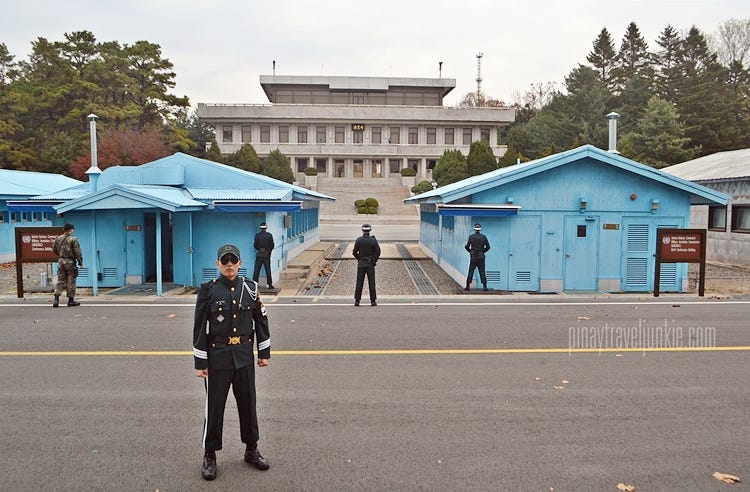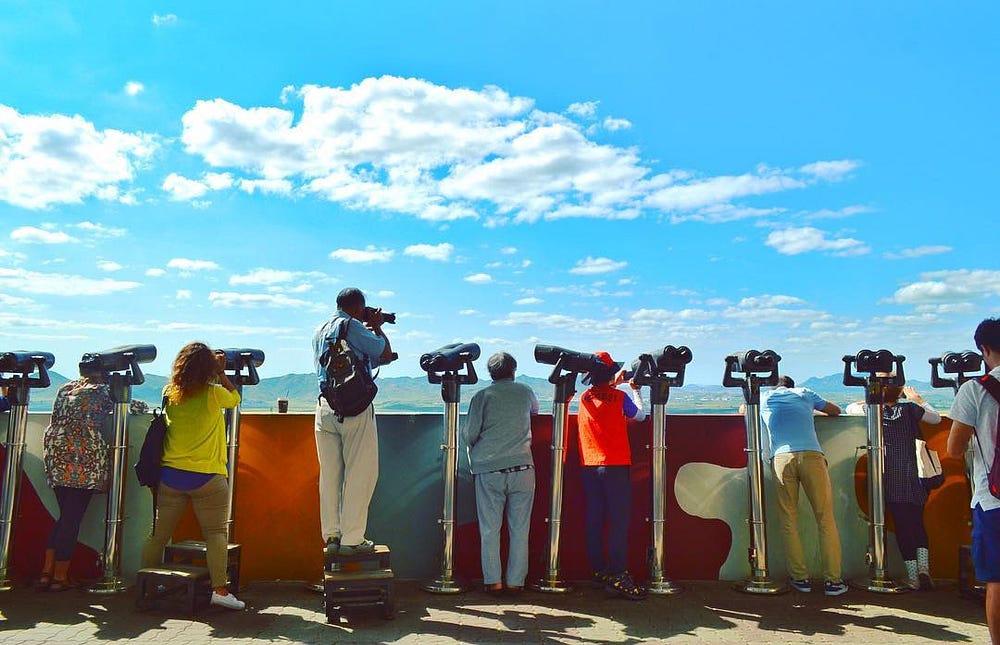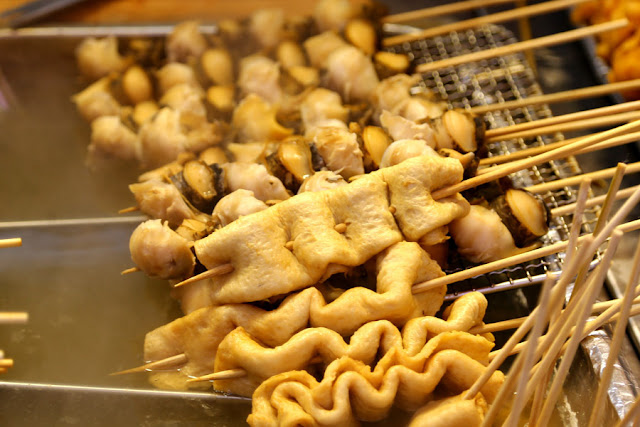Panmunjom : Top amazing things you should know about this dangerous place
The most notable political event was hold between South and North Korea on
April 24, 2018. Both Koreas once again
gathered at the site for their official face-to-face talks regarding to
“peace”. That place, is called “the most dangerous” place in the world or in a nice nickname: Panmunjom
Where is Panmunjom?
Known as a
“truce village”, Panmunjom is a small village which was originally
called “nul ban ri”, that lies at the border between North and South
Korea. It sits less than 40 miles from Seoul.
Located
in the most sensitive area of Korea’s demilitarised zone. It’s the only
tourist destination where visitors are required to sign a release that
asks them to accept responsibility for “injury or death as a direct
result of enemy action.”
It was hosting hundreds of talks between the two Koreas, which are
technically still at war because an armistice, not a peace treaty, was
reached at the end of the 1950–53 Korean War
Top Things To Know About Panmunjom
1. Tourist Destination
Although it is labeled “the most dangerous place in the world”, Panmunjom is recommended as top tourist destination when travel in Korea.
Apparently, to enter Panmunjom, the only way into this heavily restricted area is on guided tours. Visitors must pass through multiple checkpoints before arriving at Camp
Bonifas, escorted by either US or South Korean soldiers.
You are about to enter the world’s most protected border and witness the spine-chilling tension between North and South Koreas
2. No-man land
Due to heavily mined four-km-wide Korean Demilitarized Zone
(DMZ) that serves as the de-facto border between the two Koreas, neither North nor South Korea have jurisdiction over Panmunjom.
The
main road to the zone is lined with barbed-wire fences and security
watchtowers.
3. A venue for Inter-Korean talks
Located in
Panmunjom, there is a building named “Freedom House”. The Freedom House
functions as a meeting place for North and South Korea. The facility
helps the two sides to negotiate and communicate.
The
current building was constructed on July 9, 1998. It was built by the
founder of Hyundai to host reunions of families separated during the
Korean War.
4. Defection hot spot
 | |
| The Bridge of No Return |
There have
been previous defections and dramatic incidents at Panmunjom. Most
notably, in 1984, a Russian student from Moscow sprinted across the
border and triggered a 30-minute gun battle that left four people
dead — although he was unhurt
The Bridge of No Return - One of top attractions inside Panmunjom has been used for POWs (Prisoners of War) exchange. All the POWs were carried to both ends of the bridge and they were given a choice. Once they chose to cross over the road, they could not make a turning back, hence the name “Bridge of No Return”
5. Panmunjom is divided into two parts
Because of its sensitive position, it is divided into two parts by a military demarcation line: one side belonging to the North, the other to the South. The separate line is marked only by a low cement slab that no one, even visiting tourists, dare cross.
Source: Inspitrip Blog




Comments
Post a Comment